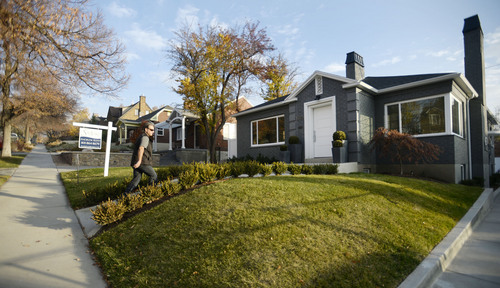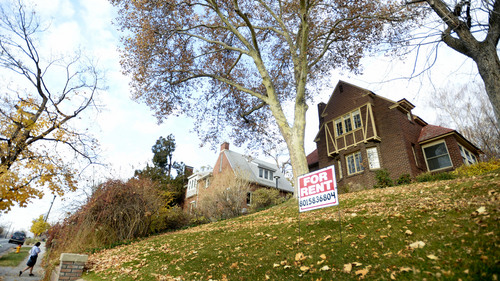This is an archived article that was published on sltrib.com in 2013, and information in the article may be outdated. It is provided only for personal research purposes and may not be reprinted.
The typical Utah home lost 8 percent of its value during the Great Recession, according to estimates released Thursday by the U.S. Census Bureau.
The median home value in Utah dropped from $227,400 in the beginning of the 2007-09 recession period to $209,000 in 2010-12. That was a decline of $18,400.
In Salt Lake County, the state's largest, home prices fell from $247,500 to $228,300 — a drop of $19,200, or 7.8 percent.
The price erosion in Utah wasn't quite as bad as the 9 percent average decline nationally, according to the newly released estimates from the American Community Survey.
Nationally, the median home price fell from $191,900 in 2007-09 to $174,600 in 2010-12 — a loss of $17,300.
Utah was among 28 states where the median home price fell. Eighteen states saw home values increase, and four essentially remained the same.
California had the biggest decrease in value, with the median priced home plunging by $102,600 from $461,400 to $358,800. North Dakota, which had an energy boom, had the biggest increase of any state, growing by $18,200 from $112,300 to $130,500.
James Wood, director of the University of Utah's Bureau of Economic and Business Research, said that just about everything that could undermine home prices hit Utah with the recession.
"We lost over 60,000 jobs in 2009," he said. "Incomes, adjusted for inflation, were declining. Unemployment was up."
Wood added that what had been large in-migration to Utah of about 40,000 people a year suddenly stopped. "People don't move when they don't have jobs," he said. "Demand just vanished for housing, which is reflected in the prices."
Also hurting prices was a spike in foreclosures. "They just pummeled prices" as a high number of foreclosed properties remained on the market at low prices, Wood said. "It wasn't until the first quarter of 2012 that we started to see prices start to firm up," he said. Since then, "We've had double-digit price increases" according to recent local housing studies.
The new Census estimates also say the rate of homeownership in Utah dropped from 71.77 percent as the recession hit to 69.69 percent afterward.
Wood said that meant Utah had 13,000 fewer homeowners, and much of that drop stemmed from foreclosures by "people who were under water with their mortgages, lost their jobs and couldn't sell their homes." Most of them turned into renters, although some moved in with relatives.
Wood said the new numbers "show the disaster we had with the recession."
The Utah State Data Center at the University of Utah, using newly released Census estimates, also reported Thursday that the number of Utah renters who spent 35 percent or more of their household incomes on rent — a standard indicator of unaffordable housing — increased from 34.7 percent as the recession hit to 40.5 percent in its wake.
At the same time, the number of homeowners with mortgages who spent 35 percent or more of their incomes on housing was not statistically different before and after the recession, holding steady at around 24.4 percent.
The Census noted in a brief released Thursday about homeownership before and after the recession that areas with smaller populations tended to retain value in homes better than large-population centers.
Home values in most of the 1,038 smaller counties (with populations between 20,000 and 65,000) saw no significant difference before and after the recession, the report said. Nearly 70 percent remained unchanged.
In contrast, 43 of the 50 largest counties saw declines in median home values.







